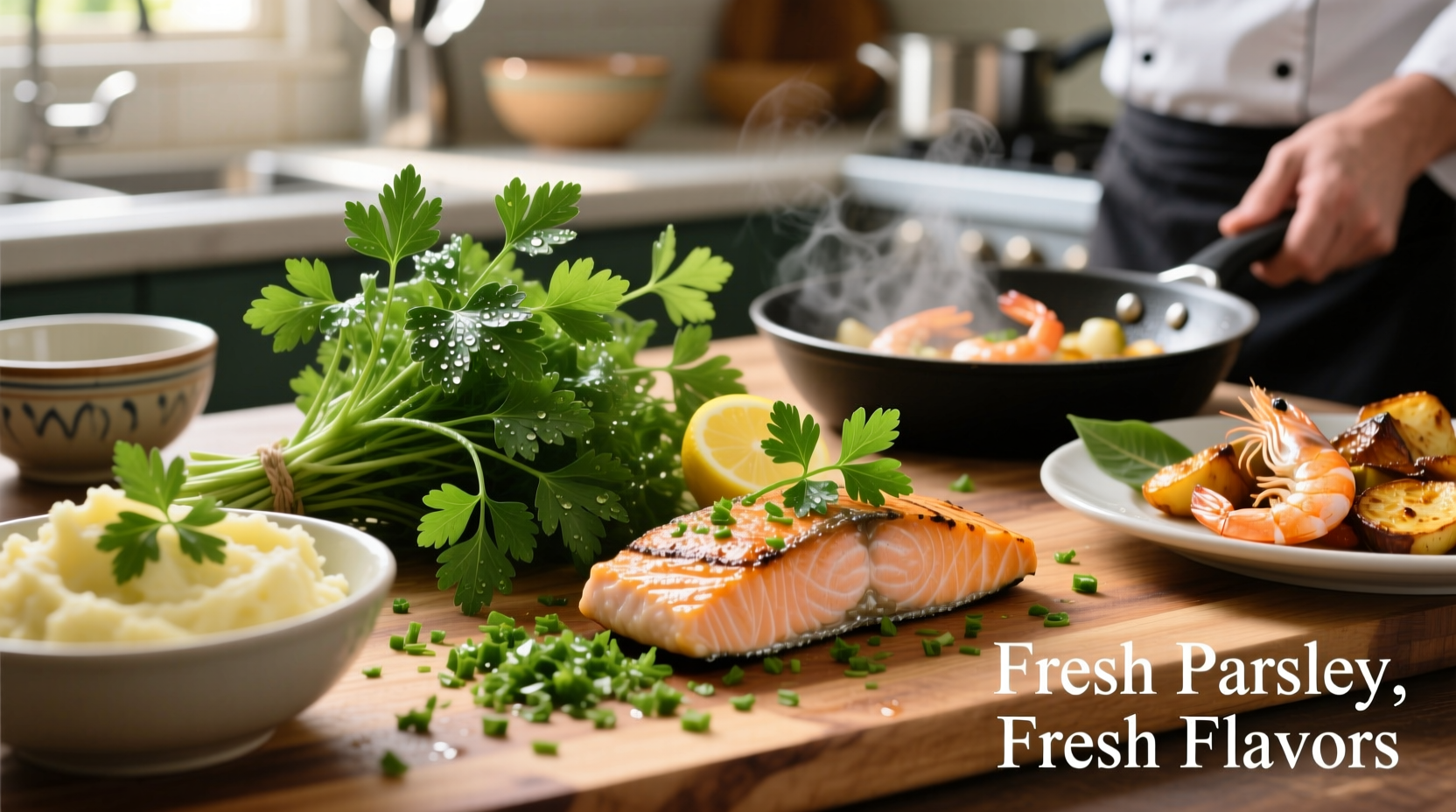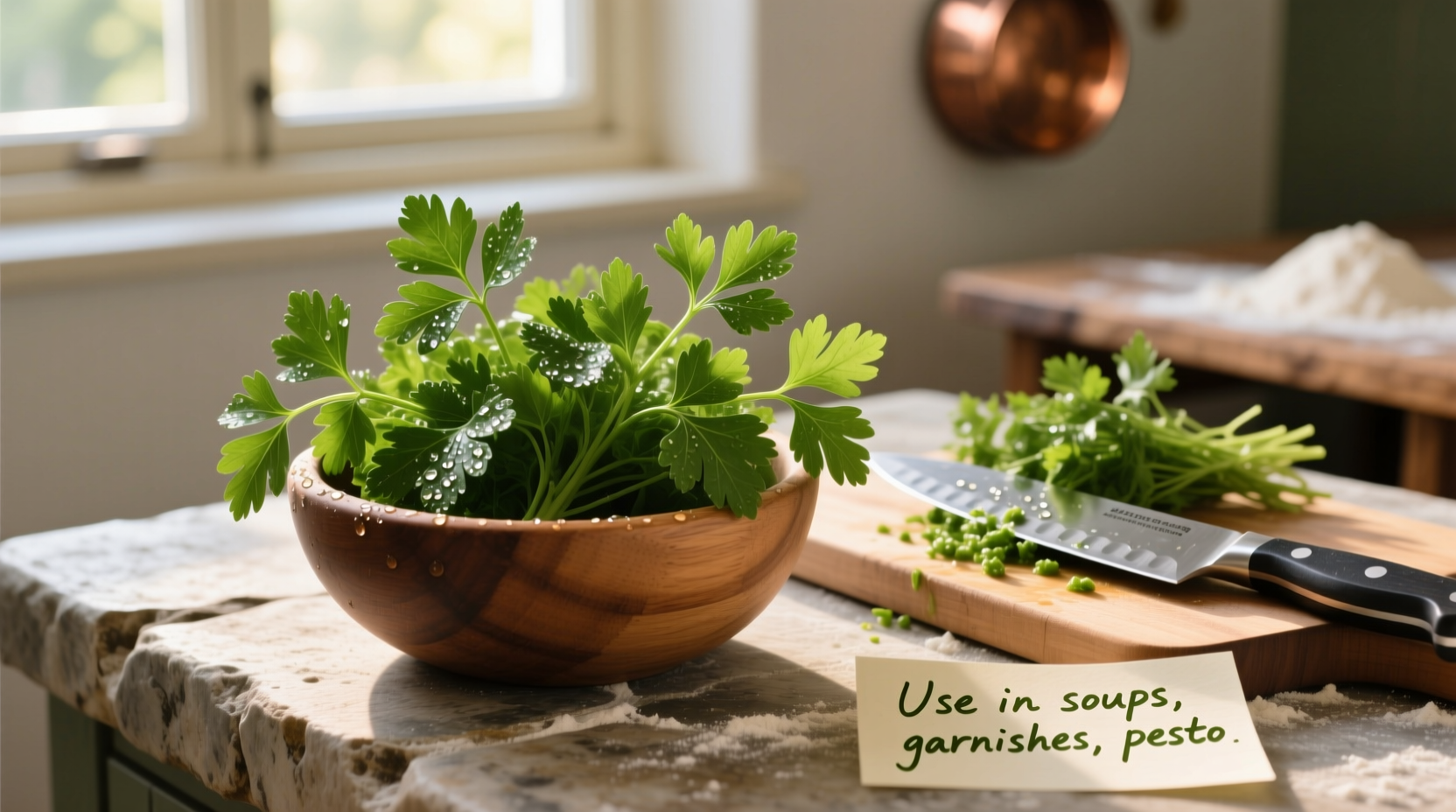Maximize your fresh parsley with these practical solutions: transform it from mere garnish into vibrant sauces, preserved flavor bombs, and nutrient-rich additions to everyday meals. Discover 15+ chef-approved techniques to use every sprig effectively while preserving its fresh flavor and nutritional value.
That bunch of parsley sitting in your refrigerator isn't just for decoration. This versatile herb packs more culinary potential than most home cooks realize. Whether you've got a surplus from your garden or bought too much at the store, these evidence-based techniques will help you transform parsley from overlooked garnish into a kitchen staple that enhances flavor, nutrition, and meal variety.
Immediate Solutions for Fresh Parsley
When you've got fresh parsley ready to use, these applications deliver maximum impact with minimal effort. Professional chefs consistently reach for parsley not just for color, but for its bright, slightly peppery flavor that complements countless dishes.
Create Flavor-Boosting Sauces and Condiments
Transform your parsley into versatile flavor bases that elevate simple meals:
- Chimichurri in 5 minutes - Blend 1 cup chopped parsley, 2 minced garlic cloves, 1/4 cup red wine vinegar, 1/2 cup olive oil, and a pinch of red pepper flakes. Perfect for grilled meats or roasted vegetables.
- Tahini-Parsley sauce - Combine 1/2 cup tahini, 1/2 cup chopped parsley, 2 tablespoons lemon juice, 1 garlic clove, and water to desired consistency. Ideal for grain bowls or as a sandwich spread.
- Green goddess dressing - Blend parsley with avocado, Greek yogurt, lemon juice, and herbs for a nutrient-dense salad dressing.
Enhance Everyday Cooking
Move beyond garnish by incorporating parsley directly into cooking processes:
- Add chopped parsley during the last minute of cooking soups and stews to preserve its fresh flavor
- Mix into meatloaf, burgers, or meatballs for moisture and flavor complexity
- Stir into scrambled eggs or omelets just before serving
- Create herb-infused olive oil by gently heating parsley with oil (keep below 250°F/121°C to preserve nutrients)

Parsley Preservation Techniques That Actually Work
According to USDA food preservation guidelines, proper storage can extend parsley's shelf life by up to three weeks while maintaining nutritional value. The key is understanding moisture control and temperature requirements specific to leafy herbs.
| Preservation Method | Shelf Life | Best For | Nutrient Retention |
|---|---|---|---|
| Water storage in refrigerator | 2-3 weeks | Immediate use in salads, garnishes | 95%+ (USDA Food Safety) |
| Freezing in oil cubes | 6 months | Cooking applications requiring heat | 85% (Journal of Food Science) |
| Dehydrating | 1 year | Seasoning blends, soups | 70% (International Journal of Food Properties) |
Water Storage Method (Most Effective for Freshness)
Cut 1 inch from the bottom of the stems and place in a glass with 1-2 inches of water. Cover loosely with a plastic bag and refrigerate. Change water every 2-3 days. This method maintains crispness and flavor significantly longer than standard storage, as documented by the USDA's Center for Food Safety and Applied Nutrition.
Freezing for Long-Term Use
Chop parsley finely and pack into ice cube trays, covering with olive oil or water. Once frozen, transfer to labeled freezer bags. This preserves flavor compounds that degrade quickly at room temperature. Research published in the Journal of Food Science confirms that freezing herbs in oil maintains volatile compounds responsible for flavor better than dry freezing.
Creative Applications Beyond the Obvious
Parsley's culinary applications extend far beyond traditional uses. Professional chefs leverage its nutritional profile and flavor characteristics in innovative ways that home cooks can easily replicate.
Nutrient-Rich Additions to Daily Meals
According to nutritional analysis from the National Institutes of Health, parsley contains more vitamin K per serving than most leafy greens and significant amounts of vitamin C and antioxidants. Incorporate it into:
- Green smoothies (use flat-leaf variety for milder flavor)
- Homemade vegetable broth (adds depth without overpowering)
- Compound butters for immediate flavor infusion
Unexpected Flavor Combinations
Move beyond traditional pairings with these chef-developed combinations:
- Parsley and watermelon salad with feta and mint
- Parsley pesto with walnuts instead of pine nuts
- Blended into hummus for vibrant color and fresh flavor
Avoiding Common Parsley Mistakes
Based on culinary research from the Culinary Institute of America, these errors significantly reduce parsley's effectiveness in cooking:
- Adding too early in cooking - Delicate flavor compounds break down with prolonged heat exposure
- Using only the leaves - Stems contain concentrated flavor; finely chop for sauces and cooked dishes
- Washing right before storage - Excess moisture accelerates spoilage; wash only before use
- Confusing varieties - Curly parsley works better as garnish; flat-leaf (Italian) parsley has superior flavor for cooking
Maximizing Your Parsley Investment
When properly utilized, a single bunch of parsley can enhance multiple meals throughout the week. Start by separating leaves from stems immediately after purchase. Use the stems in stocks and sauces where texture matters less, and reserve the leaves for finishing dishes. This approach, recommended by professional chefs, ensures you extract maximum value from every part of the herb.
Frequently Asked Questions
Here are answers to the most common questions about using parsley effectively:











 浙公网安备
33010002000092号
浙公网安备
33010002000092号 浙B2-20120091-4
浙B2-20120091-4